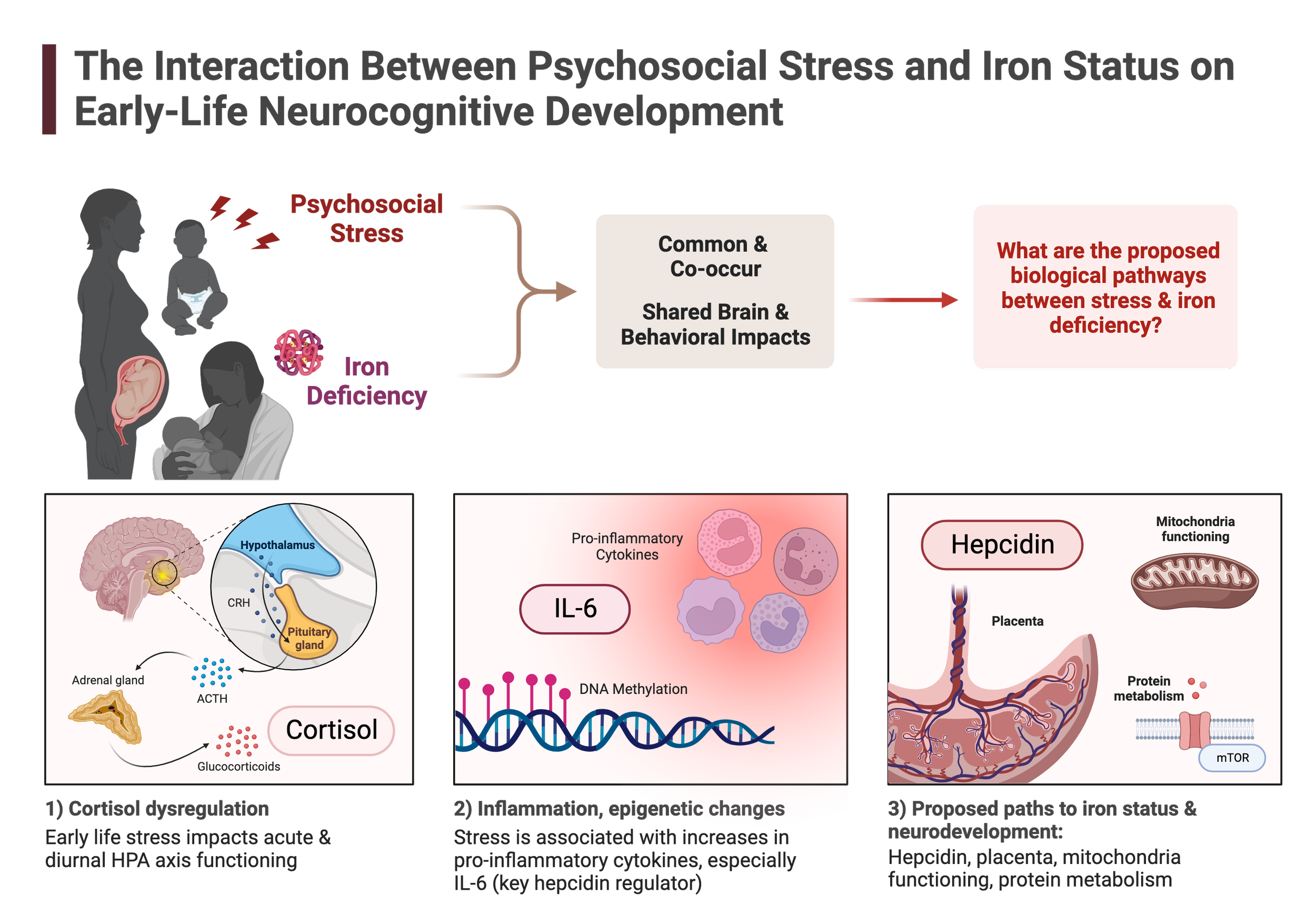New paper in Nutrients
Announcing Our New Publication: Unpacking the Complex Relationship Between Psychological Stress, Iron Status, and Early-Life Neurodevelopment
We're thrilled to announce the publication of our new paper, "The Interaction between Psychological Stress and Iron Status on Early-Life Neurodevelopmental Outcomes," by Brie Reid and Michael Georgieff in the special issue on Iron Deficiency and Iron-Related Disorders in Nutrients. This review explores the fascinating but understudied relationship between psychological stress and iron deficiency, two prevalent conditions that can significantly influence neurocognitive development. The paper examines the latest evidence from animal and human studies, outlining their potential combined impact, especially during pregnancy and the neonatal period.
Why It Matters: A Double Whammy
Both stress and iron deficiency are common issues contributing to long-term developmental outcomes. This review focuses on their interplay and its potential repercussions on neurodevelopment. Given how commonly these conditions coexist, understanding their combined effects could open the door to targeted interventions for better early-life health and long-term cognitive benefits.
Mechanisms at Play
Our paper delves deep into the physiological mechanisms that might be at play. When a person is stressed, the hypothalamic–pituitary–adrenocortical (HPA) axis activates, which leads to a rise in proinflammatory cytokines. This increase could interfere with iron absorption and metabolism, likely mediated by the IL-6 activation of hepcidin—a molecule that impedes iron absorption.
Recommendations for Future Research
One of the most exciting aspects of this paper is its potential to guide future research. We call for dual-exposure studies that can better explain the mediating role of iron in the relationship between early stress and neurodevelopmental outcomes. These findings could pave the way for targeted interventions to help the most vulnerable—children exposed to prenatal and postnatal stress and those at risk for early iron insufficiency.
Want to Learn More?
Please check out the full paper in Nutrients
Abstract
This review presents evidence from animal and human studies demonstrating the possible connection and significant impact of poor iron status and psychological distress on neurocognitive development during pregnancy and the neonatal period, with implications for long-term cognition. Stress and iron deficiency are independently prevalent and thus are frequently comorbid. While iron deficiency and early-life stress independently contribute to long-term neurodevelopmental alterations, their combined effects remain underexplored. Psychological stress responses may engage similar pathways as infectious stress, which alters fundamental iron metabolism processes and cause functional tissue-level iron deficiency. Psychological stress, analogous to but to a lesser degree than infectious stress, activates the hypothalamic–pituitary–adrenocortical (HPA) axis and increases proinflammatory cytokines. Chronic or severe stress is associated with dysregulated HPA axis functioning and a proinflammatory state. This dysregulation may disrupt iron absorption and utilization, likely mediated by the IL-6 activation of hepcidin, a molecule that impedes iron absorption and redistributes total body iron. This narrative review highlights suggestive studies investigating the relationship between psychological stress and iron status and outlines hypothesized mechanistic pathways connecting psychological stress exposure and iron metabolism. We examine findings regarding the overlapping impacts of early stress exposure to iron deficiency and children’s neurocognitive development. We propose that studying the influence of psychological stress on iron metabolism is crucial for comprehending neurocognitive development in children exposed to prenatal and early postnatal stressors and for children at risk of early iron insufficiency. We recommend future directions for dual-exposure studies exploring iron as a potential mediating pathway between early stress and offspring neurodevelopment, offering opportunities for targeted interventions.

